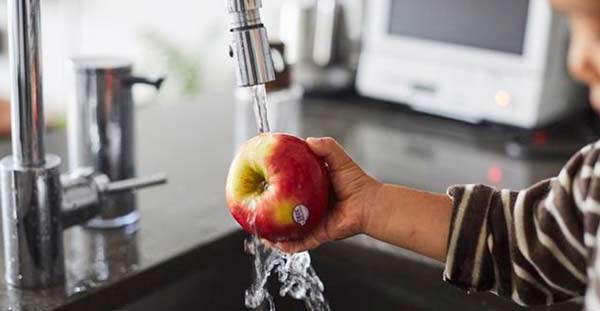Health & Wellness
Pesticide Ban Is a Win for Children – and Science

September 17, 2021
Nicole Greenfield
Back in 1989, a groundbreaking NRDC report called Intolerable Risk detailed the perils children faced just by dutifully eating their fruits and vegetables. “These staples of children’s diets routinely, and lawfully, contain dangerous amounts of pesticides, which pose an increased risk of cancer, neurobehavioral damage, and other health problems,” its summary stated. “Although solutions are at hand, little is being done by the government to protect children from the intolerable risk to their health posed by pesticide residues in food.”
Thirty-two years later, after dozens of scientific studies and relentless pressure from NRDC and other public health, farmworker, and community advocacy groups, the U.S. Environmental Protection Agency (EPA) finally banned chlorpyrifos, one of the most toxic and widely used pesticides on the market
Chlorpyrifos, part of a family of nerve agents developed during World War II, is a potent neurotoxin that research shows can permanently and irreversibly harm the developing brains of children. Exposure in early life to chlorpyrifos—on favorite fruits like apples and berries, via drinking water contaminated by agricultural runoff and through drifting air from nearby farm fields—can increase risk of developmental delays, learning disabilities, lower IQ scores, and ADHD. It can also lead to respiratory problems and diminished lung function. The U.S. farming industry has been spraying approximately five million to eight million pounds of chlorpyrifos on crops every year. In agricultural communities, the practice puts farmworkers and their families—a predominantly Latino population—at greater risk of exposure at work and at home.
The battle to cancel chlorpyrifos was a hard-won fight. “We had to have political muscle, we had to have legal tools, and we had to have scientific expertise,” says Erik D. Olson, senior strategic director of health and food at NRDC. “If any of the three of those were missing, we would have lost.”
Olson describes the challenge of going up against a well-financed and extremely powerful pesticide industry that, taking a page from the tobacco industry’s playbook, has worked to create doubt about legitimate scientific findings. “For years, we were fighting the constant smokescreen of industry-funded studies that say ‘there’s no problem with these chemicals,’” he says. While they worked to rebut these industry-biased studies, NRDC scientists simultaneously evaluated and communicated the findings of independent and government research on chlorpyrifos—including by the National Academy of Sciences in 1993 and, in 2016, by the EPA itself. That report, an updated human health risk assessment to a 2014 analysis of the pesticide, confirmed that all uses for chlorpyrifos were unsafe and that toddlers were being exposed to it at levels 140 times greater than what the agency deemed safe.
A major milestone in the fight came in 2000 when the EPA, as a result of advocacy by NRDC and public health groups, banned indoor uses of the chemical, such as in roach sprays and other household pest products. That set the stage for NRDC, together with Pesticide Action Network, to petition the agency in 2007 to ban its agricultural uses. Advocates celebrated when the Obama administration finally proposed a total chlorpyrifos ban in October 2015, intending to implement the new rule in early 2017.
But the victory was short-lived. After Trump took office in 2017, his administration announced a 180-degree reversal—without new evidence—and halted the process. (The decision came after EPA administrator Scott Pruitt met with the CEO of chlorpyrifos manufacturer Dow Chemical, whose company also contributed $1 million to Trump’s inaugural activities.)
In the end, science—and an administration unwilling to ignore it—prevailed. In response to a lawsuit brought by NRDC and a coalition of labor and health groups represented by Earthjustice, the U.S. Court of Appeals for the Ninth Circuit found the Trump administration’s delays to be illegal and ruled in April that the EPA needed to follow through on the ban. After the ruling, more than 35,000 NRDC activists sent letters urging the agency to ban chlorpyrifos from our food once and for all. On August 18, the agency made it official.


